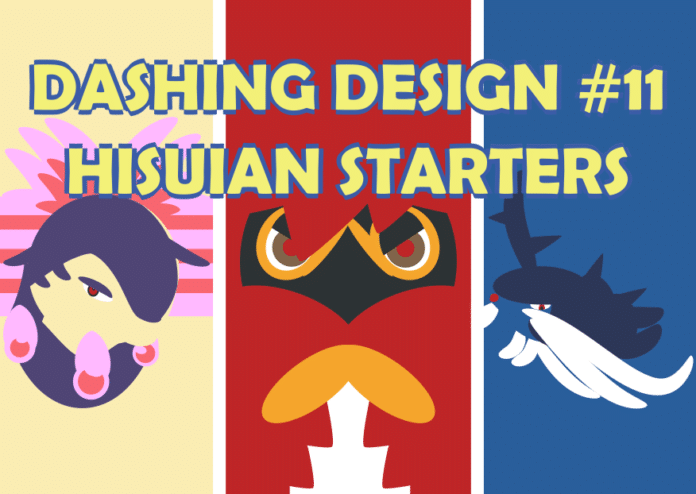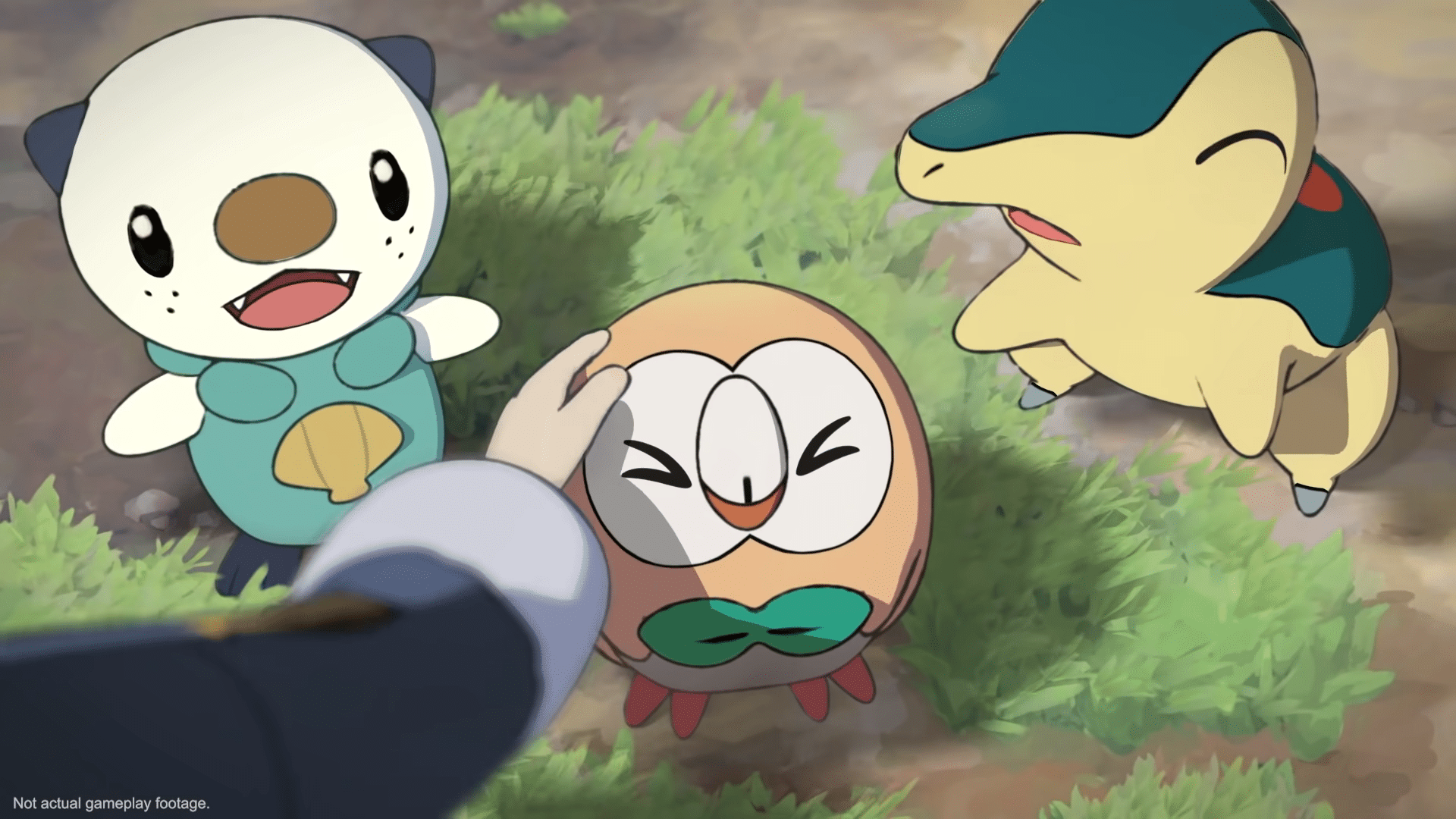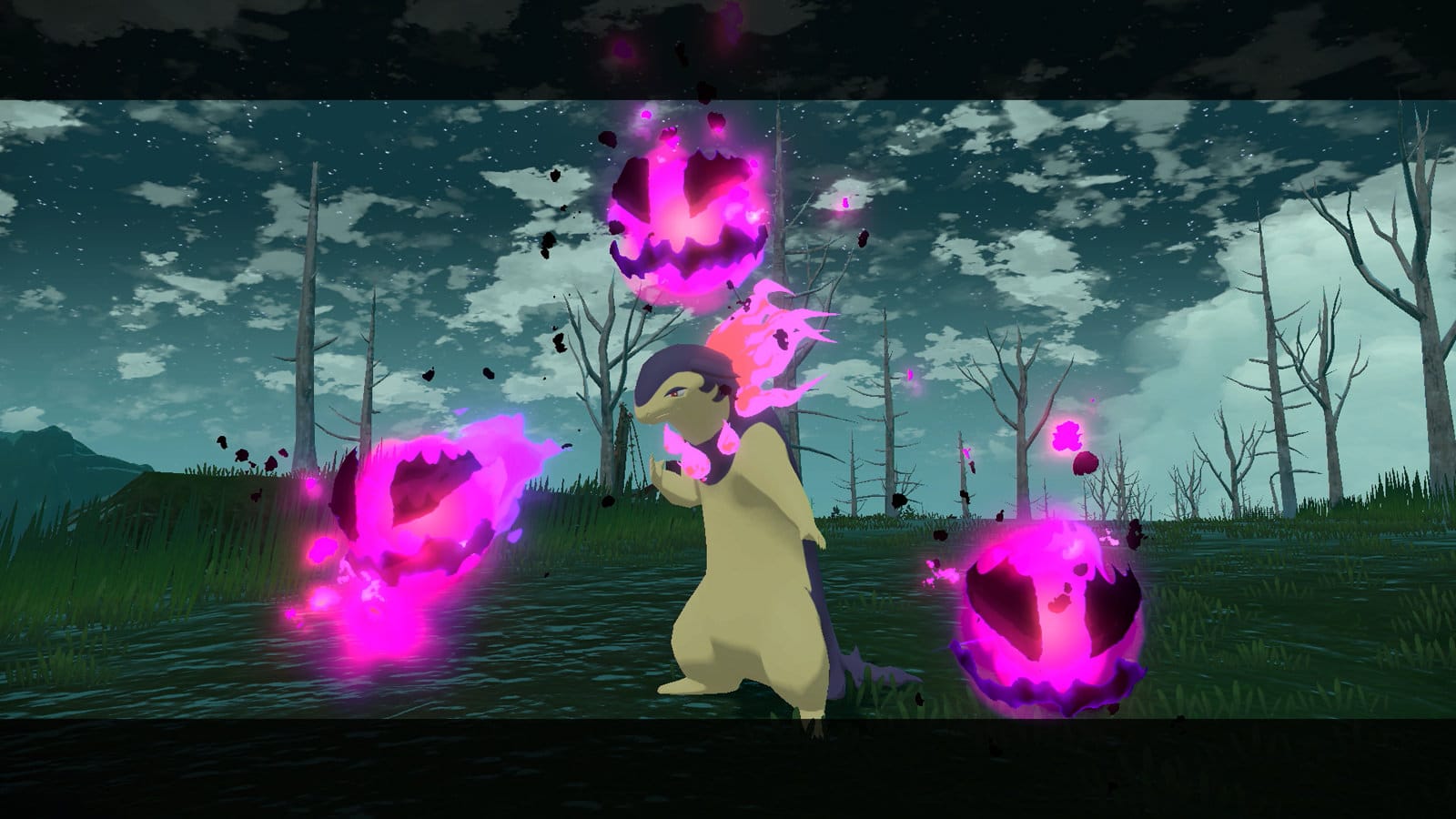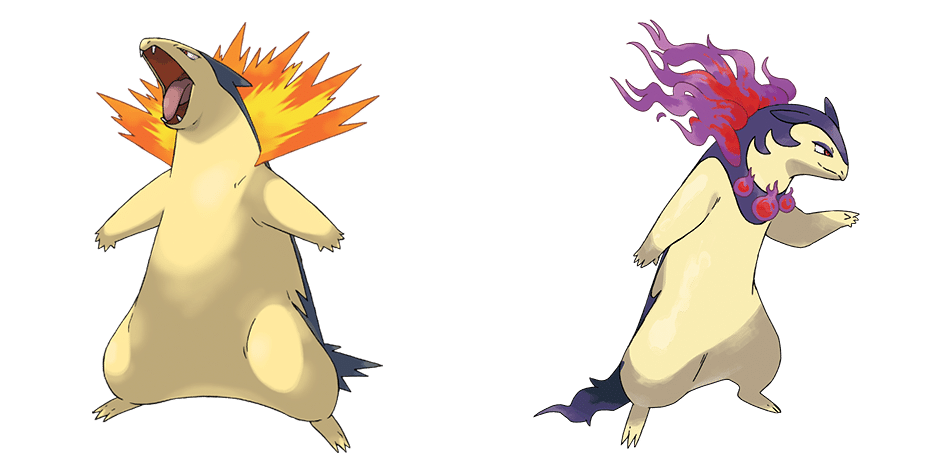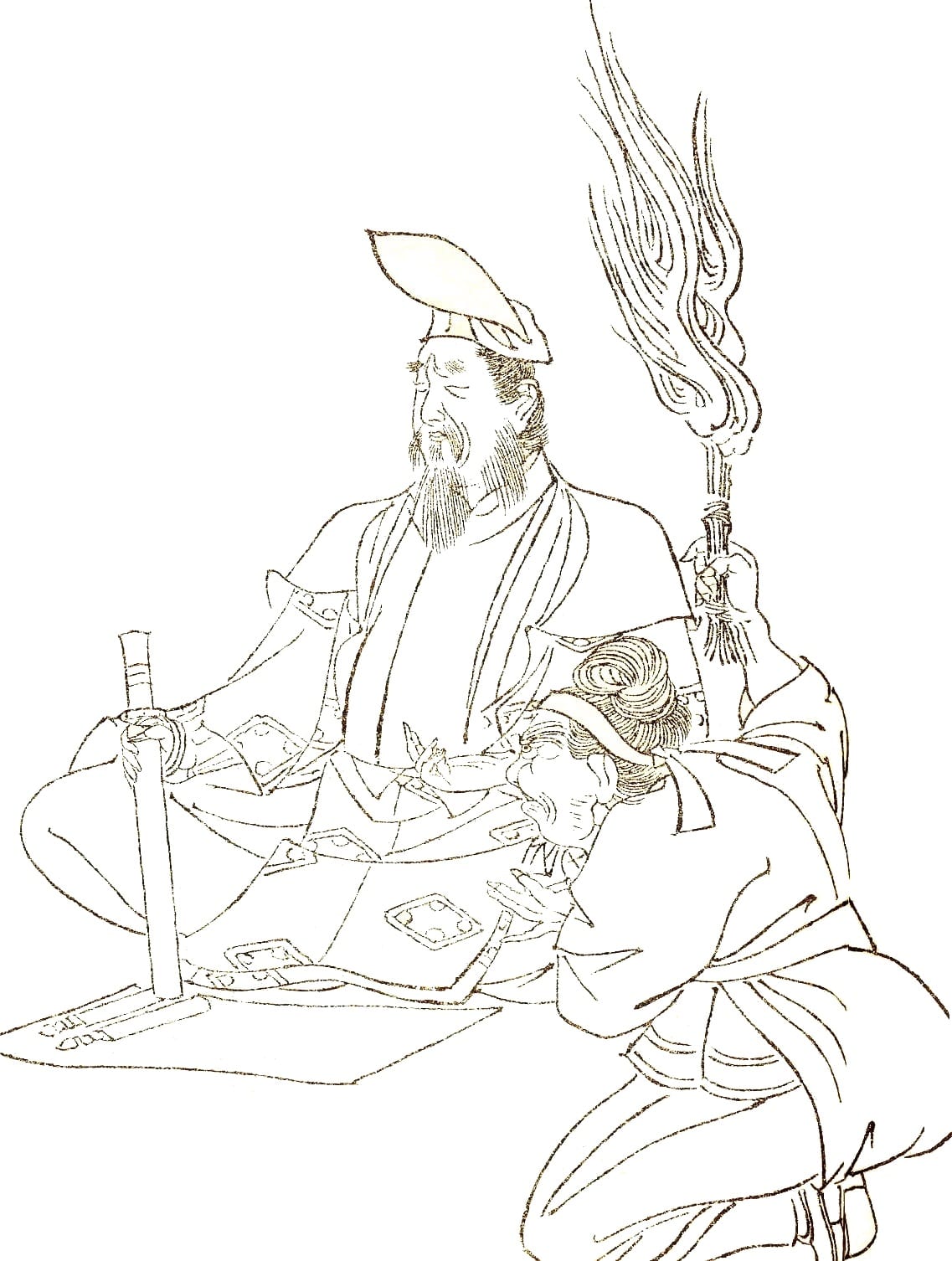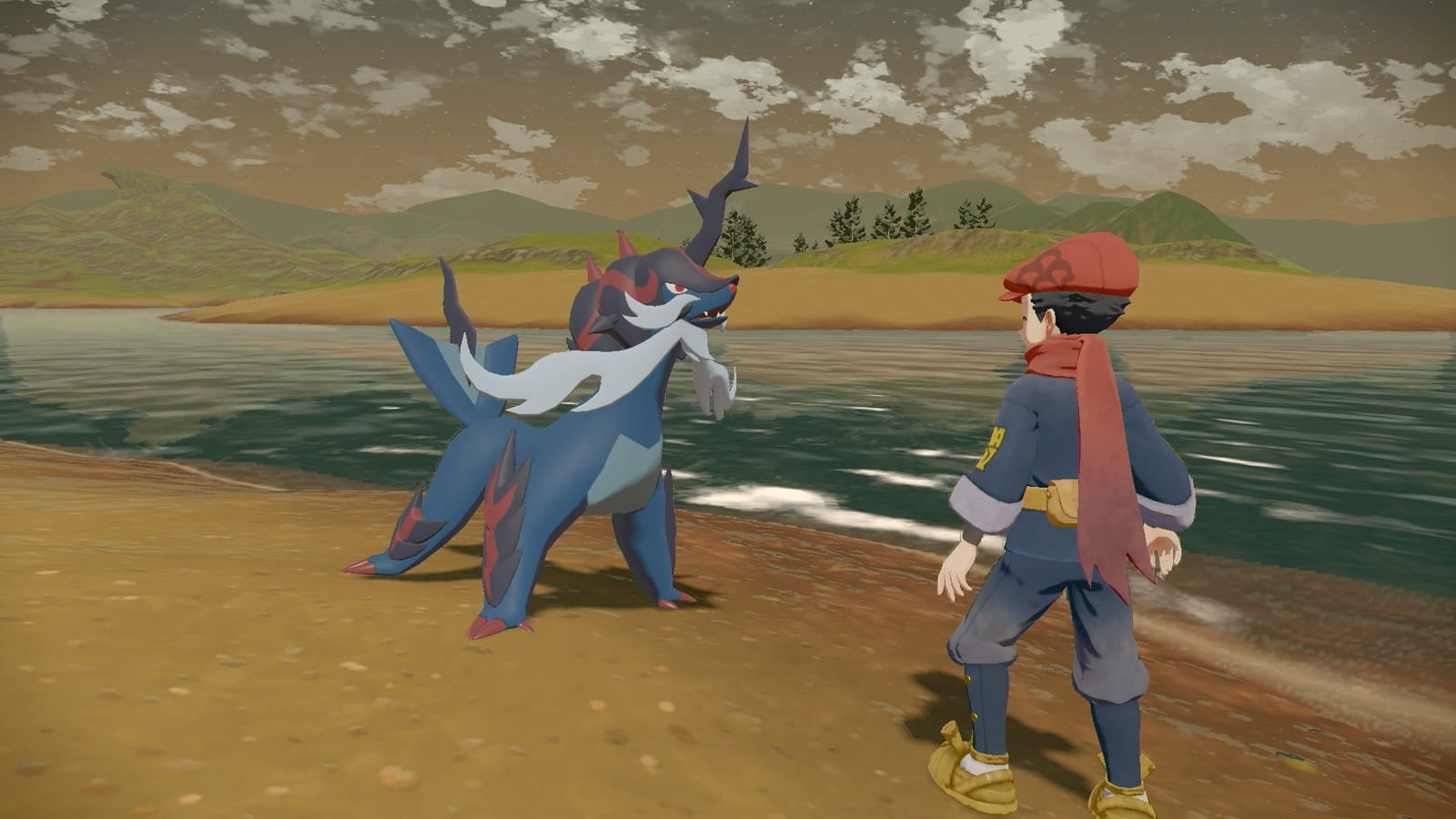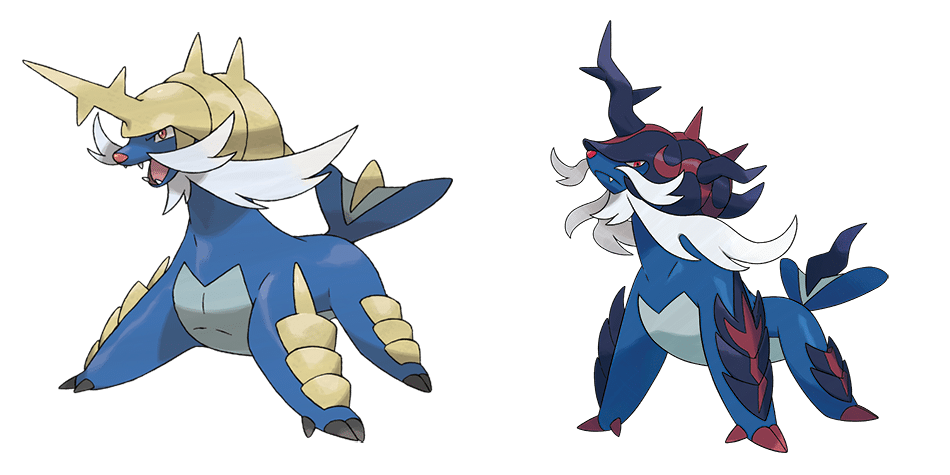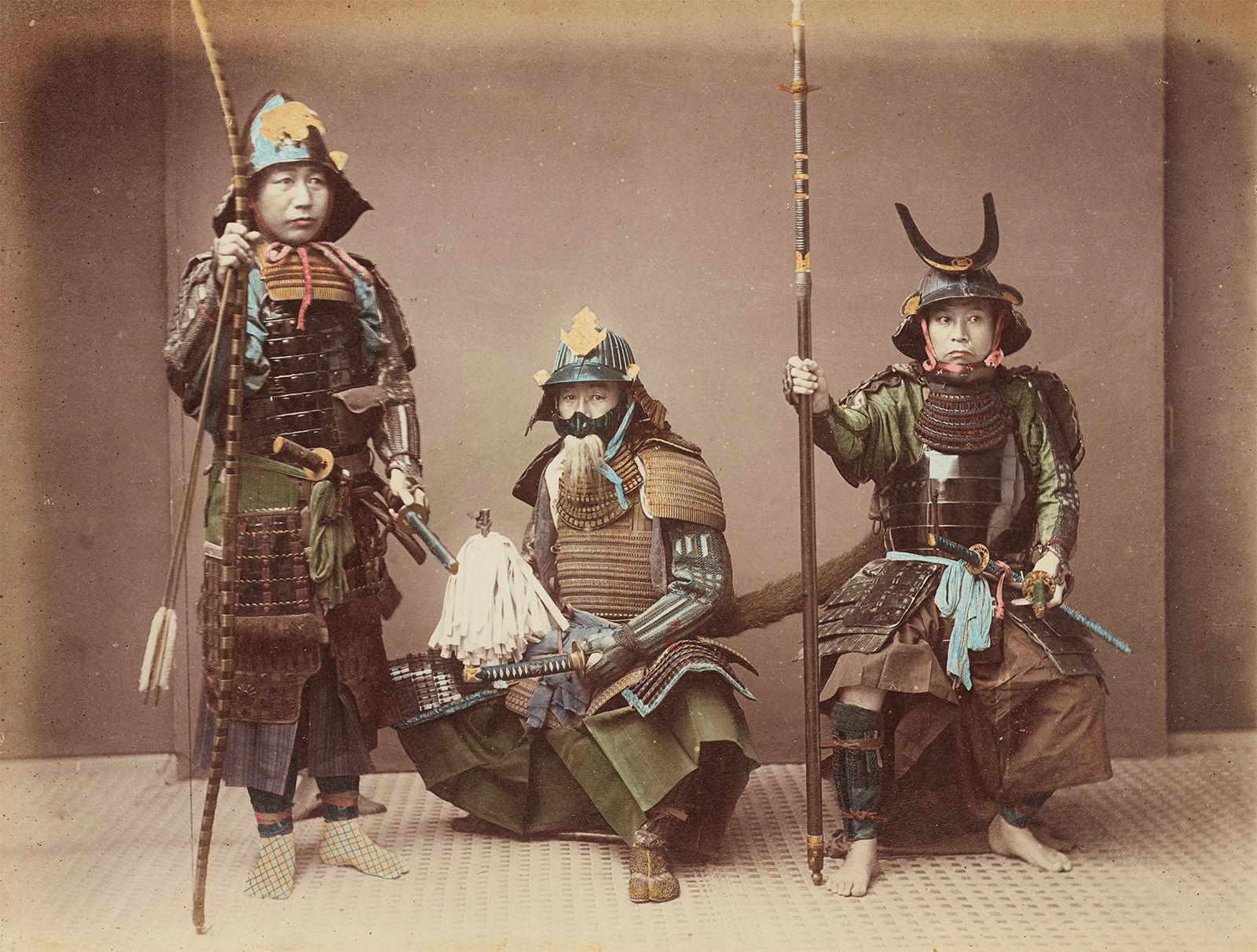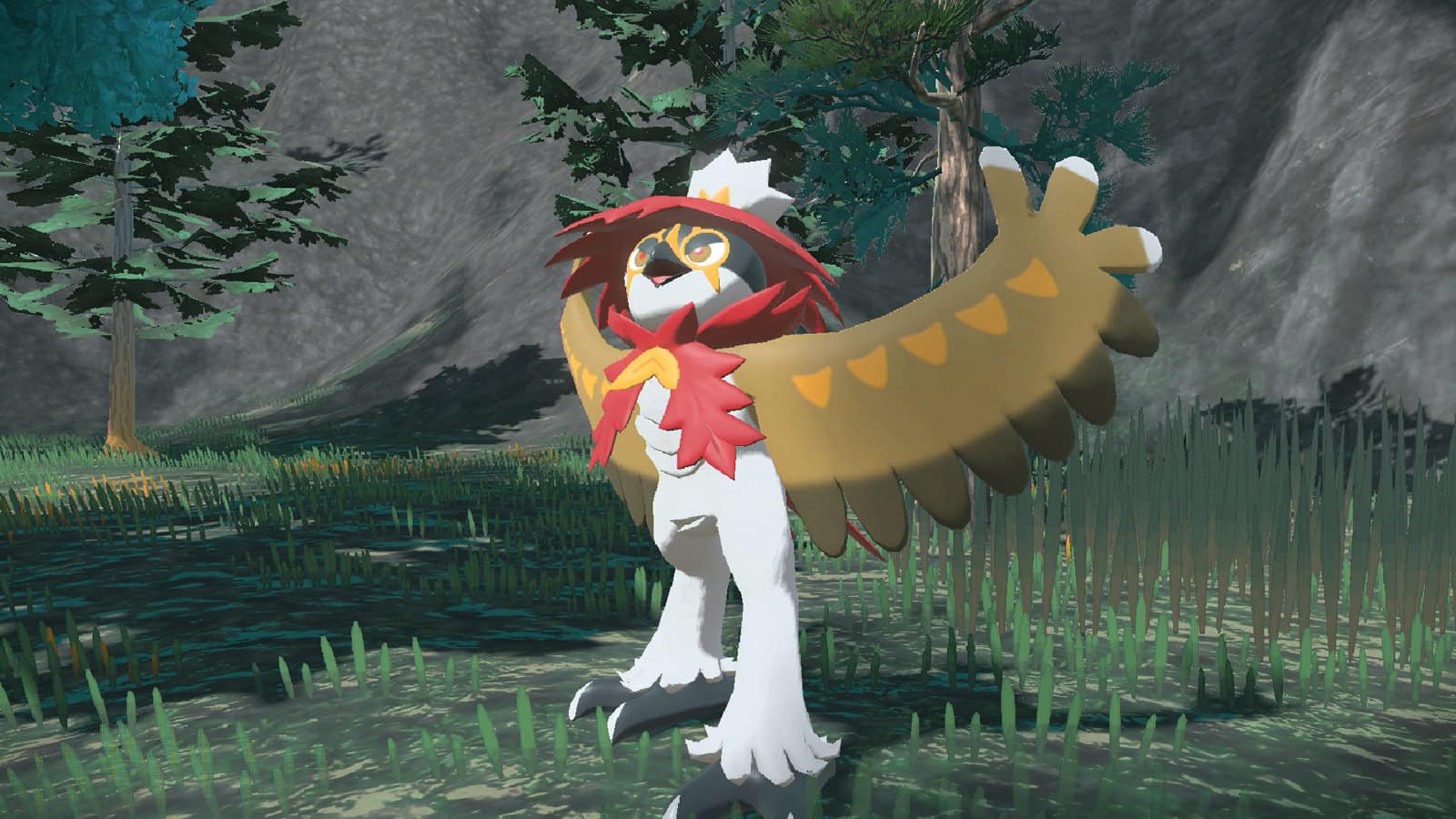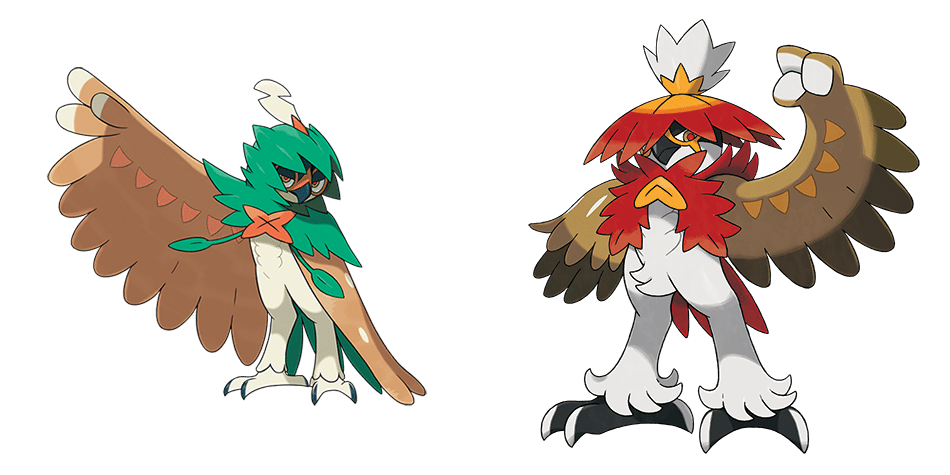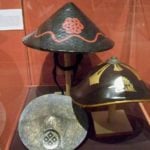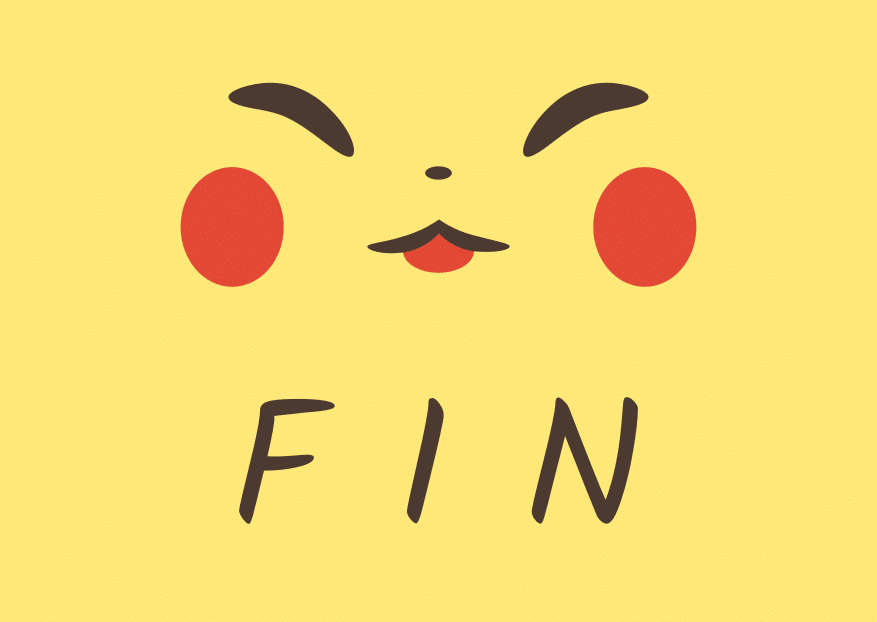Good day, Pokémon Trainers! Have you ever noticed how certain events in Pokémon GO give special attention to a single Pokémon or the community itself tends to hype a new Pokémon up? Have you ever wondered why this Pokémon specifically and what its origins are?
Well, that’s where the Dashing Design series comes in! I’ll be your guide as we take a look at the franchise history, concept, and potential design inspirations of specific Pokémon. So, Hisuian Typhlosion, Hisuian Decidueye, and Hisuian Samurott. They’re front and center in the current season of Timeless Travels, they are the newest Pokémon from Hisui, they all got their own raid days, and they’ll be back for GO Tour soon as well. What makes these three so special? Let’s take a look in this three-for-one Dashing Design!
Oshawatt (left), Rowlett (middle), and Cyndaquil (right). Source: Game Trailer
Hisuian Typhlosion, Decidueye, and Samurott are the final evolutions of the starters (or first partner Pokémon as they are referred to more officially, apparently), that you can choose between in the game Pokémon Legends: Arceus. While these versions of these Pokémon were new to Legends: Arceus, the Pokémon “species” are anything but new.
Cyndaquil is the oldest of the trio. Being the Fire type starter of Pokémon Gold, Silver, and Crystal released in 1999-2001, and eventually evolving into Typhlosion. This would put it neatly in the Second Generation of the mainline games.
After that came Oshawatt. This adorable otter is the Water type starter of Pokémon Black, White, Black 2, and White 2. Its final evolution is Samurott and is part of Generation Five of the mainline games that started in 2011 (2010 in Japan).
Finally, this brings us to Rowlet, the initial form of Decidueye. Rowlet was introduced as the Grass type starter for Pokémon Sun, Moon, Ultra Sun, and Ultra Moon. Making it a Seventh Generation (Starting in 2019) Pokémon and the newest member of the Legends: Arceus trio.
This brings us to Pokémon Legends: Arceus itself. Released worldwide in early 2022, this unique gem in the mainline series takes place in Hisui. Which is the ancient name for the region of Sinnoh, where the Fourth Generation of games, Pokémon Diamond and Pearl takes place. So instead of introducing new Pokémon in starters, we get a selection of starters from previous generations that all get a new form. As for why these three were chosen specifically, that will be the key question to answer in today’s analysis.
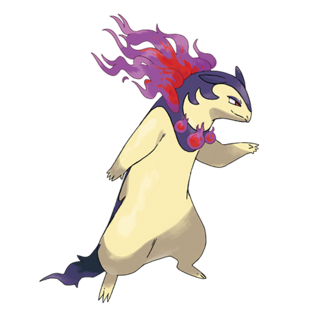 Typhlosion (Hisuian)
Typhlosion (Hisuian)
Source: Official Site
Etymology
Since the focus of today’s analysis is the Hisuian-specific final forms of these Pokémon, the etymology section is where we’re gonna take a brief look at the inspiration for each mon’s entire line before getting into the main design discussion.
With that being said, let’s start with the earliest entrant to the franchise, Typhlosion. Typhlosion’s name is very likely a combination of “Typhoon” (A natural disaster characterized by swirling winds) and “Explosion” (A violent shattering or blowing apart of an object, usually resulting in damage in a wide radius). The “Typho” part of the name may also take from “Typhon”, a creature from Greek mythology, who had a wife named “Echidna”.
These all pretty succinctly describe Typhlosion’s design inspirations. It’s a spiked mammal such as an Echidna or a Porcupine. Except the spikey quills of such creatures are replaced with flames. Thus representing a natural disaster, such as an erupting volcano.
Design
Typhlosion (left) and Hisuian Typhlosion (right). Source: Official Site
H. Typhlosion’s design immediately implies a very different personality compared to regular Gen Two Typhlosion. Hisuian Typhlosion is more slender, the color of its body is more muted, and its default stance is calmer, less battle-ready. But perhaps the most striking difference is the change from regular Typhlosion’s passionate, orange flames to H. Typhlosion’s wispy purple-ish flames.
Indeed, H. Typhlosion’s flames do not give the imagery of a “quilled back” like regular Typhlosion’s does. Instead, these flames are wrapped around H. Typhlosion’s neck like a necklace. To be more accurate, it has the appearance of a prayer bead necklace. Such loops of prayer beads are common to many religions and go by various names. In Japan, they are most commonly associated with Buddhism and are typically referred to as ojuzu or onenju.
As for how many of these beads are in H. Typhlosion’s necklace, there are 108 (Similar to the number of spirits in Spiritomb, aye?). As confirmed by the official site for Pokémon: Legends Arceus. This is accurate to real-life Buddhist Prayer Beads as well. This is because the number 108 is significant in Buddhist practice and is referred to in many forms. Just as an example, to welcome the new year in Japan, a bell is rung 108 times which represents the 108 earthly temptations one must overcome to reach the Buddhist equivalent of Heaven, Nirvana.
The spirits
So H. Typhlosion’s flames are in the shape of prayer beads. But let’s talk about the flames themselves. Rather than having a regular yellow-orange color, H. Typhlosion’s flames have a ghostly purple color to them. In fact, in the P: LA site linked earlier, they are directly referred to as Ghost Flames. And right next to that, it’s stated that Typhlosion consumes lost spirits, only to guide them on their way through its flames.
Abe No Seimei, a famous onmyōji. Source: Public Domain Image collected from Wikipedia
I believe these qualities take inspiration from Onmyōji. I’ll try to simplify the concept of Onmyōji to the best of my abilities. But in essence, the title of Onmyōji was a state position that dealt with spirituality and the natural order of things. Their abilities and duties included divination, astronomical and astrological observations, and spirit channeling. Indeed, the idea of Onmyōji summoning divine ghosts or spirits (referred to as Shikigami) is perhaps one of the most important abilities they possess that has become popular in modern media.
And that is also where H. Typhlosion’s abilities come from. In fact, H. Typhlosion has the exclusive signature attack Infernal Parade. This is a clear reference to Hyakki Yagyō or “The Night Parade of One Hundred Demons”. A supposed procession of Japanese folkloric creatures such as Yokai or Oni. It’s believed that an Onmyōji’s handwritten scroll talisman is required to not be spirited away by such a procession. And also that only Onmyōji can pass through such a procession safely. Thus our Onmyōji H. Typhlosion being able to use this move.
The Common Thread
So what commonality do H. Typhlosion’s Buddhist and Onmyōji inspirations share. I believe the common thread is the “Heian-Period”. You see, Japanese history is broadly separated into various periods based on certain events. Such as the coronation of a new emperor. The Heian period began when Japan’s capital was moved to Heian-Kyo (modern-day Kyoto). Heian means peace. The Heian era was characterized by an extended period of relative peace and isolation. During which, Japan could grow its own individual culture and advance arts and literary development.
The Onmyōji and certain Buddhist sects unique to Japan came about during this period. In fact, Abe-No-Seimei, the most popular Onmyōji whose popularity in media continues even today, was active during this time as well. So, I believe Hisuian Typhlosion takes inspiration from Heian beliefs and aesthetics in general.
Typhlosion certainly would not be the first to do so. As many other Japanese pop media do so as well. If you are familiar with the recently popular anime and manga series Jujutsu Kaisen, that is also a series that takes heavy inspiration from Heian period concepts if you know what to look for. So if you are a fan of this show keep an eye out and maybe you might notice some of these yourself!
 Samurott (Hisuian)
Samurott (Hisuian)
Source: Official Site
Etymology
Samurott’s name is rather simple. It’s a combination of Samurai (A Japanese noble warrior class very popular in fiction) and Otter (A type of semi-aquatic mammal). Though those familiar with otters will be sure to quickly notice. Samurai doesn’t quite look like an otter. This is because, as confirmed through developer interviews, Samurott’s design also takes inspiration from another type of semi-aquatic mammal, the sea lion.
As for it’s Japanese name, it’s Daikenki. Literally meaning Great Sword Demon. Which we will soon learn, is a name fitting for Hisuian Samurott. Perhaps even more than regular Samurott.
Design
Samurott (left) and Hisuian Samurott (right). Source: Official Site
While the difference between Samurott and its Hisuian counterpart may be more subtle than Typhlosion’s, it is definitely still significant. H. Samurott’s default stance looks a lot more prideful and unfriendly than regular Samurott. But of course, the main difference is the striking black/red shell-made samurai armor, compared to regular Samurott’s beige. This along with the more jagged sharp and spikey look definitely gives Hisuian Samurott a more “cruel and dangerous”-vibe compared to regular Samurott, to go along with its part Dark typing.
Three Samurai in Armor. Source: Public Domain Image collected from Wikipedia
Bushidō
But why is Hisuian Samurott like this though? To understand, we will need to get acquainted with two new terms: “Bushidō” and “Tsujigiri”. Bushidō or “The way of the warrior” is the honorable code of conduct the samurai must follow. It is similar to the Western concept of “Chivalry” that knights were said to follow. And much like Chivalry, how much of Bushidō was actually practiced and whether or not it was an actual term used by the samurai for most of their existence is a matter of debate (Really the same applies for Tsujigiri but we’ll get to that soon). Both Chivalry and Bushidō have certainly had their chance to be romanticized over time.
Tsujigiri
Though whether or not Bushidō was an actual strict code of conduct samurai followed isn’t really important for our discussion, if you ask me. The fact that such a term exists at all is still symbolic of the fact that as noble warriors, there is an existing idea of samurai acting honorable and just. And Tsujigiri would be the opposite of that. Tsujigiri or “Crossroads Killing” was supposedly the act a samurai would perform. Where the samurai would strike an unsuspecting passerby walking across the road to test their swords. Of course, meaninglessly taking a random passerby’s life is by no means honorable or just and can be generally seen as the conduct of evil samurai.
However, much like Bushidō, whether or not samurai were actually casually killing people to test out their swords, is questionable. But much like Bushidō, this concept is perhaps more emblematic of the cultural idea behind certain samurai behavior. Especially during the “Sengoku Period” otherwise known as the “Warring States Period”.
Sengoku
The Sengoku period comes after the Heian period. And coincides with the greater Muromachi period. It is generally remembered as a period of war and strife. As many samurai leaders and landlords wage endless conflicts to attain more land and power. The lives of everyday people were at constant risk as these power-hungry lords would use progressively more destructive methods to gain victory over the other. And even though Japan would later be unified under the leadership of popular figures such as Oda Nobunaga, Toyotomi Hideyoshi, and Tokugawa Ieyasu. History remembers the former two as grizzly conquerors as well.
So it can easily be seen why a term such as Tsujigiri would eventually arise from such times. But to come back to H. Samurott. The P: LA site states:
While Samurott’s previously discovered appearance is known to fight fair, Hisuian Samurott is cold and heartless, and is willing to do anything in order to win. It is usually still and silent, but if an opponent approaches, Hisuian Samurott will thrust at it with its seamitars faster than the eye can see.
Very similar to Tsujigiri and the general tendencies of the “noble warrior” class of the warring states period. Also worth noting, right next to the previous text it’s stated:
Its fierce, rapid attacks—delivered with dual-wielded seamitars that strike like torrents of waves crashing together—are a sight to behold. It is said that wounds from these attacks will not heal for many years.
This might be referring to another popular Sengoku-era figure, Muramasa. Muramasa is said to be a very prolific swordsmith whose swords were prized by Tokugawa Ieyasu’s family. Tokugawa Ieyasu being the one to finally end the age of war and herald a new age of relative peace. Though the Muramasa swords would eventually come to be known as cursed, demonic, and bloodthirsty. As many of Tokugawa Ieyasu’s family would fall under Muramasa’s blades themselves.
Muramasa would eventually become a popular figure in fiction. Often being compared to another swordsmith, “Masamune”, who was said to have created holy blades that do not harm the innocent. H. Samurott’s “Seamitars” seemingly harken to such tales.
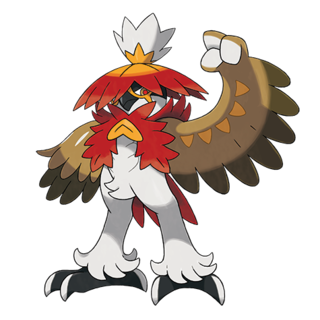 Decidueye (Hisuian)
Decidueye (Hisuian)
Source: Official Site
Etymology
Last but not least on our list is Decidueye. Decidueye gets its name from “Deciduous” (A quality of trees and shrubs meaning the ability to change colors of their leaves and shed during the autumn season) and “Eye” (A type of organ most animals possess which allows them the ability of sight). The eye part probably stems from the fact that Decidueye is an archer and you need a good eye to be good at using ranged weaponry. Consider terms such as Bullseye and Deadeye that have an eye in their names.
As for being Deciduous, that certainly fits Hisuian Decidueye’s description as it seems to have changed colors from green to red, orange, and yellow. Though interestingly, Decidueye’s Japanese name is Junaiper. Which seems to be taking from Ju (Meaning Tree) and Sniper (Both the name of a type of long-ranged firearm and those who use them). But the name also seems to take from “Juniper”, which is not a Deciduous plant.
Design
Decidueye (left) and Hisuian Decidueye (right). Source: Official Site
We already talked about how Hisuian Decidueye has autumn leaf-colored feathers as opposed to regular Decidueye’s green. But that is hardly the only difference. For example, H. Decidueye’s default pose has it having its wing pumped upward in the style of a fist, signifying victory. Quite fitting for its newly acquired Fighting typing. But other than that Decidueye’s hood has been replaced with a “Kasa” or Japanese straw hat for its Hisuian version. And its wings have shorter feathers now with more muted colors. Which looks similar to a “Mino” a type of old Japanese raincoat. Its talons are also now sharper, looking almost like swords.
Source: Various Kasa (Image 1) uploaded by Samuraiantiqueworld in Wikipedia and a Mino (Image 2) uploaded by Jnn on Wikipedia.
All of these give the impression of a Pokémon that’s prepared to both travel and fight. This is echoed in its information from the P: LA site again:
Hisuian Decidueye has evolved to be fierce and stalwart in order to survive in the region’s harsh environments. It doesn’t have a set territory. Instead, it goes wandering in search of food to survive. Unlike in its previously discovered appearance, it tends to deliberately engage in close-range combat to overpower opponents. However, it seems to tolerate those that do not display hostility toward it.
Rōnin
I love looove this description of H. Decidueye. It perfectly explains what this Decidueye is meant to be, a Rōnin. Literally meaning “a rider of the waves”, in actual usage Rōnin means wanderer, drifter, or vagabond. Typically, samurai who lost or did not have a master were called Rōnin. It’s a term that tended to have a negative connotation, and to an extent does so to this day as well. With Rōnin being particularly common during the Edo period which came after the war-torn Sengoku period. This period was an extended period of peace and followed a strict class structure to maintain this peace. Thus Rōnin representing the “outcasts” of society.
However, the Rōnin have certainly been brought to a more positive light in modern fiction. With franchises such as Samurai Champloo, Rurouni Kenshin, and Vagabond portraying them in a more protagonistic position. And even Japanese-inspired Western franchises such as Samurai Jack presenting the idea of a Rōnin more positively. This is understandable, as not only the idea of a lone masterless warrior going on a journey of self-discovery, coming to terms with their more violent and peaceful sides very cool, but also because of certain Rōnin from the Edo period.
In particular, the 47 Rōnin who staged a famous assassination of their master’s killer and perhaps more importantly, Miyamoto Musashi. Who was a Rōnin of many talents, such as being a strategist, a philosopher, a writer, and the inventor of a new sword fighting style. All of this earning him the title of “Sword Saint”. Many media such as the aforementioned Vagabond and the game series “Brave Fencer Musashi” have Miyamoto Musashi as their protagonist!
Musashi (center) from Brave Fencer Musashi. Source: Fair Use Image collected from Wikipedia
All of this fits H. Decidueye’s description perfectly. It’s a wandering vagabond. It uses its sword-like talons on its legs to fight along with its arrows, much like how the samurai were versed in both swordplay and archery. And it does not harm the innocent, much like the modern Musashi-inspired introspective Rōnin. Who are masterless but still follow a strict moral code!
And there we go! 11th in the Dashing Design series and a uniquely structured one at that. I wanted to do these three together because I believe they share a strong connection other than being starters for the same game. The starter Pokémon beginning with generation five have a stronger thematic connection tying them together. For example, the newest generation nine trio has Meowscarada (based on a musician), Skeledirge (based on a singer), and Quacaval (based on a dancer). So overall, they represent different types of entertainment performances.
Likewise, I believe the three Hisuian starters represent different periods in Japan’s history. Typhlosion, the oldest in the franchise, is based on the Heian Period. Samurott, the mid-comer, is based on the Sengoku period which came after the Heian Period. And lastly, we have Decidueye, the newest entrant in the franchise, representing the newest period of history of the three, the Edo period. We can even be more specific and say that the three Pokémon represent the three most important periods of history before the Meiji Period, which is the timeframe Pokémon: Legends Arceus is loosely based on. And this is why, the Hisuian Starters’ designs, are quite dashing!
Goodbye for now, Pokémon trainers. Priom-out!

